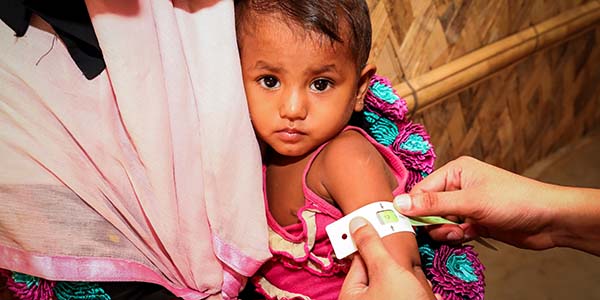
The global challenge of malnutrition affects a significant portion of children globally. As of 2020, more than 230 million children were reported by the World Health Organisation (WHO) to be malnourished in one way or another. In fact, the WHO 2021 fact sheet on malnutrition revealed that malnutrition was responsible for 45% of deaths among children aged 5 and below. While undernutrition is well-known to families around the world, not much attention is given to overnutrition, a form of malnutrition that arises from too much intake of nutrients.
Historically, and more commonly in poorer communities, people are quick to identify the kwashiorkor stricken and underweight children as the perfect picture of malnutrition. However, an overweight child is likely to be suffering from overnutrition because they may be consuming more calories, proteins, or other nutrients than their body needs, causing fat to store up in the body.
CRISIS OF MALNUTRITION
India faces a peculiar challenge among the comity of nations of the world. The 2022 Global Hunger Index ranked us 107th out of 121 countries. Data from the fifth National Family Health Survey (NFHS-5), conducted in 2019–2021, and the UN Food and Agriculture Organisation (FAO) show that India has the highest rate of child wasting (low weight for height), with 19.8% of children affected. In the same vein, the indicators showed that 35.5% of children in the world’s most populous nation (next to China) were stunted (low height for age). Low-birth weight babies and infants suffering from wasting are at very high risk of death in India, according to available data. These are triggered by inadequate nutrition, tied closely to Hunger. However, at the other end of the stick is an equally troubling reality. A recent study showed that overnutrition among preschool children ranged from 4% to as high as 17% (using a cutoff BAZ > +2 and +1). What this shows is a relatively high prevalence of both undernutrition and overnutrition in India. Nutrition is a basic human need and a prerequisite for a healthy life. The reason why malnutrition should get all the attention it needs is so that health complications can be averted and mortality reduced to the barest minimum. A proper diet is essential from the very early stages of life for growth, development, and a state of overall well-being. Undernutrition increases the risk of infectious diseases such as diarrhoea, measles, malaria, and pneumonia, and chronic malnutrition can impair a young child’s physical and mental development. Also, it is worthy of note that overnutrition can lead to obesity, resulting in a number of non-communicable diseases (NCDs) such as coronary artery disease, stroke, and even diabetes mellitus. When overnutrition is caused by excess macronutrients, leading to fat cell buildup, chronic inflammation may occur, as well as metabolic disorders and NCDs.
FINDING A PANACEA
Indeed, the world has waged a war against hunger for centuries. In fact, the UN, WHO, and governments across the world have taken steps to address the crisis of malnutrition. The Universal Children’s Day celebrated on 20 November of every year presents an opportunity for the world to take action for children’s nutrition and health. In India, there is a conscious effort on the part of the government to address malnutrition and nip it in the bud. From the National Nutrition Mission (which is making laudable strides to address malnutrition), and the Anemia Mukt Bharat Abhiyan (to accelerate the rate of decline of anaemia in the country), to the Mid-day Meal (MDM) Scheme. Other interventions include the National Food Security Act (NFSA), the Pradhan Mantri Matru Vandana Yojana programme (through which Rs 6,000 is provided to pregnant women to help them afford better childbirth facilities), and the Integrated Child Development Services (ICDS) Scheme, launched in 1975. With a renewed mission to achieve Goal 2 (Zero Hunger) of the Sustainable Development Goals by 2030, there is a need to begin to take advantage of the nutrition-rich foods in the country and allocate them in the right proportions to vulnerable families. On the other hand, massive sensitisation campaigns need to be launched to make people understand that overweight is a problem even in children. The point needs to be made that an overfed and overweight child is at risk of deadly health conditions and nutrients must be consumed in the right amounts. Only then can the nation, and the world at large, begin to work towards a society where there is improved nutrition for all children.
Sanjeev Jain works as Jt. Managing Director at Akums Drugs and Pharmaceuticals